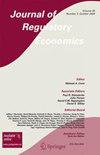法规遵从性成本和生产效率:从工作时间入手。
IF 1.4
4区 经济学
Q3 ECONOMICS
引用次数: 0
摘要
本研究提出了一种通过关注劳动力投入来衡量规章制度合规成本的新方法,并基于对工人的调查估计了日本的合规成本。结果显示,遵守规章制度所需的工作时间占劳动力总投入的20%以上。按行业划分,金融和保险行业的这一成本更高,其次是健康和福利行业,按公司规模划分,大公司的成本更高。如果这些成本减半,整体经济生产率将提高约8%。本文章由计算机程序翻译,如有差异,请以英文原文为准。
Compliance costs and productivity: an approach from working hours.
This study proposes a new approach of measuring compliance costs of rules and regulations by focusing on labor input, and estimates the compliance costs in Japan based on a survey of workers. According to the results, the working hours required to comply with rules and regulations account for more than 20% of total labor input. By industry, this cost is higher in the finance and insurance industry followed by the health and welfare industry, and by firm size, it is higher in large firms. If these costs were halved, overall economic productivity would increase by about 8%.
求助全文
通过发布文献求助,成功后即可免费获取论文全文。
去求助
来源期刊

Journal of Regulatory Economics
ECONOMICS-
CiteScore
2.40
自引率
0.00%
发文量
14
期刊介绍:
Recent legislative and policy reforms have changed the nature of regulation. Partial deregulation has created a new dimension to regulatory problems, as the debate is extended to include diversification and new forms of regulation. The introduction of incentive-based rate schedules and ratemaking procedures, the integration of demand-side programs with planning for capitol expansion, and other developments, raise a host of theoretical and empirical questions. The Journal of Regulatory Economics serves as a high quality forum for the analysis of regulatory theories and institutions by developing the rigorous economics foundations of regulation. Both theoretical and applied works, including experimental research, are encouraged. Research in all aspects of regulation is of interest including traditional problems of natural monopoly, antitrust and competition policy, incentive regulation, deregulation, auction theory, new policy instruments, health and safety regulation, environmental regulation, insurance and financial regulation, hazardous and solid waste regulation, universal service obligation, and consumer product regulation. The JRE provides researchers, policy-makers, and institutions with current perspectives on the theory and practice of economics of regulation. While there are a number of journals and magazines that include the study of regulation, the JRE is unique in that it fills a gap in the market for a high quality journal dealing solely with the economics of regulation.Officially cited as: J Regul Econ
 求助内容:
求助内容: 应助结果提醒方式:
应助结果提醒方式:


